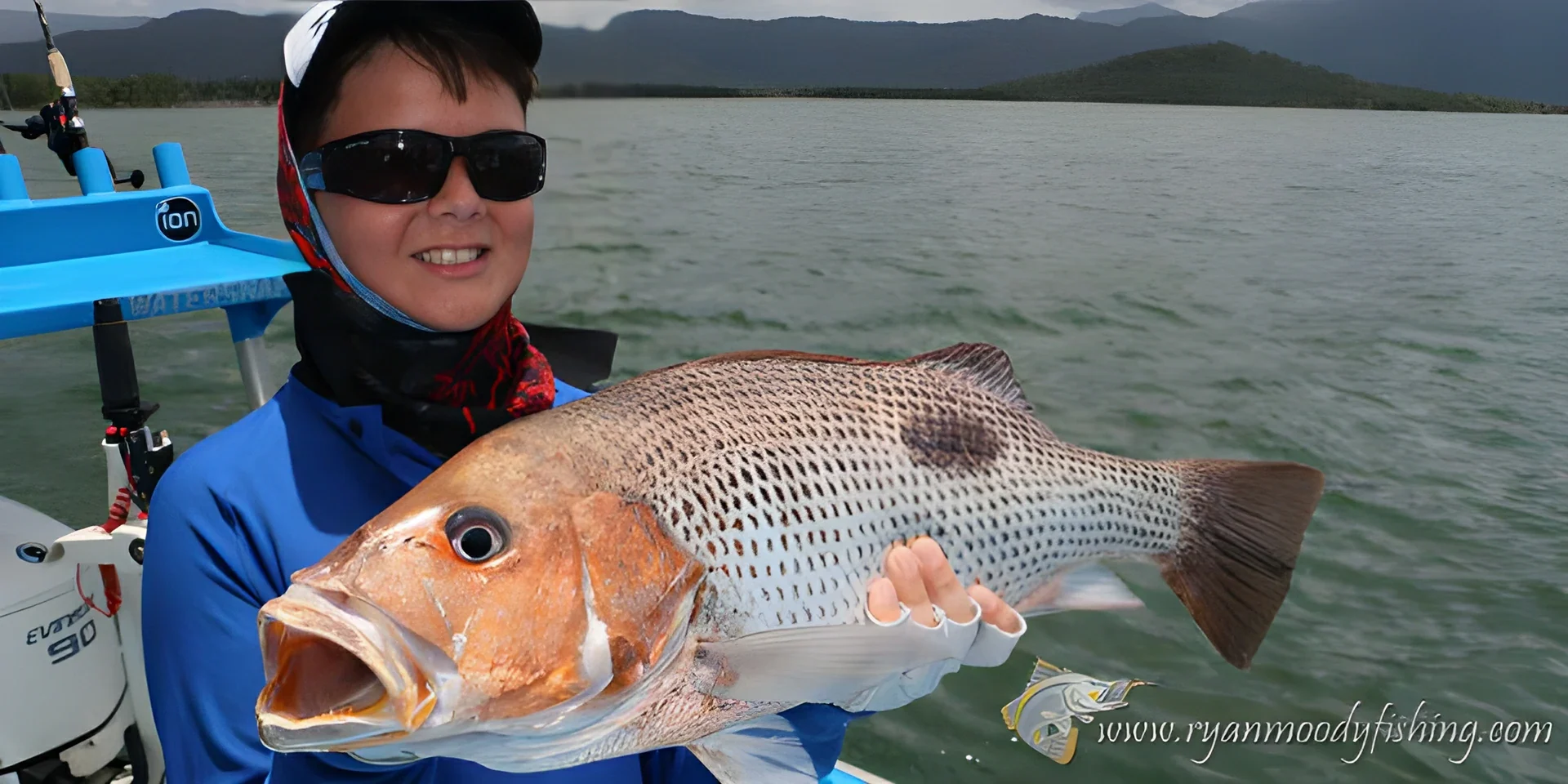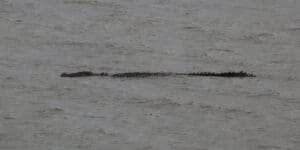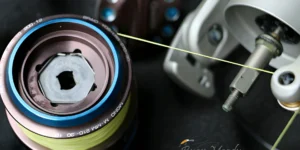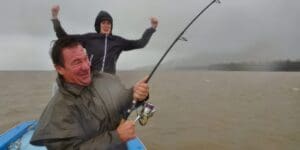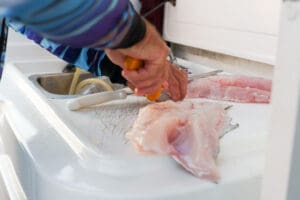Fingermark or Golden Snapper are a premium table fish and highly prized among north Australian fishing community for their looks, taste and fighting ability. Fingermark fishing has become increasingly popular due to their aggressive hits and the challenge they present.
A member of the Lutjanidae family, Lutjanus johnii are known around Australia by several names, golden snapper, fingermark bream, John’s snapper, big-scale red, goldy’s and spotted scale sea perch among a few others.
We just call them fingermark, primarily due to the dark blotch on the upper flank. Apparently back in biblical times St Peter brought a fish to Jesus marked with his thumbprint and many fish with a blotch on the side have common names derived from the story (John Dory/St Peters Fish, Moses Perch etc).
Regardless of how the blotch got there, fingermark are a stunning fish growing to around 90 to 100cm and even the smaller specimens fight surprisingly hard.
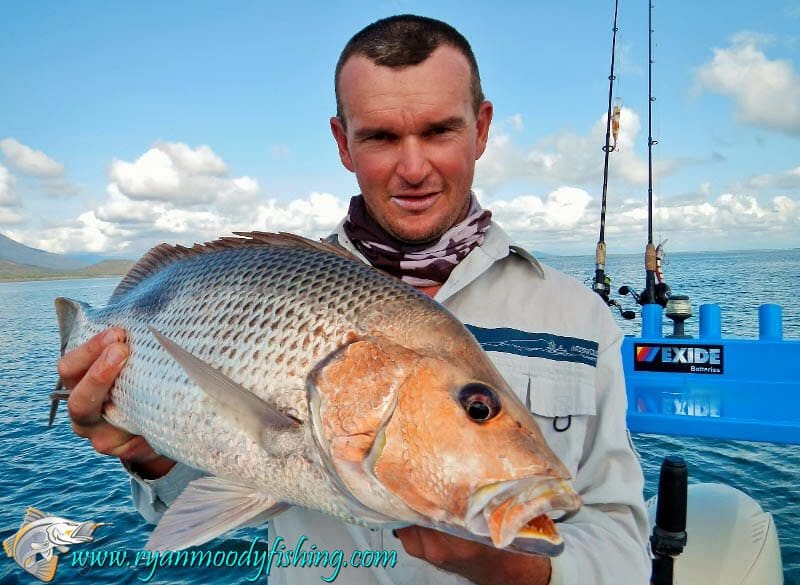
Like their Lutjanid cousins Mangrove Jack, Red Emperor and Papuan Black Bass, fingermark are an aggressive, broad shouldered fish with prominent canine teeth. There aren’t many fish that can smash you like a Lutjanid hence their fearsome and thug-like reputation.
Biology of Fingermark – Golden Snapper
The distribution of Fingermark/Golden Snapper throughout northern Australia, also inhabiting tropical inshore waters from East Africa to Fiji and northern Australia to just south of Japan.
To some, learning about the biology of the species is a bit too boring and scientific. But reality is, knowing your quarry when it comes to fingermark fishing is what makes all the difference between a fluke catch and anglers that experience consistent success.
It also has a direct bearing on the sustainability of fishing pressure.
Because let’s face it, we all want to be able to continue to catch and enjoy eating premium food fish for generations to come.
So back to fingermark – golden snapper…
Fingermark are particularly slow growing, living up to 30 years and only reaching sexual maturity from 6-8 years of age and at sizes over 50cm. For fish that’s really slow.
Typically juveniles form schools that inhabit estuaries whereas the adults can be encountered on coastal and offshore reefs.
Results of Suntag tag-recapture studies (infofish) indicate that immature Golden Snapper (20 cm-45 cm) show a remarkable degree of loyalty to a particular location, with 80% of recaptures occurring within a 1 x 1 km area. Only 1% of fish moved more than 50 km with the greatest distance being 140 km.
They are also susceptible to severe and fatal barotrauma in waters over 10 m in depth. You can view the effects of barotrauma on fingermark in this video by NT Govt.
So despite modern anglers doing the right thing (a 2010 survey of Qld recreation anglers revealed 50% of Fingermark were released) the actual harvest by the recreational sector is likely to be higher than estimated, depending on the depth of water fished due to deaths by barotrauma.
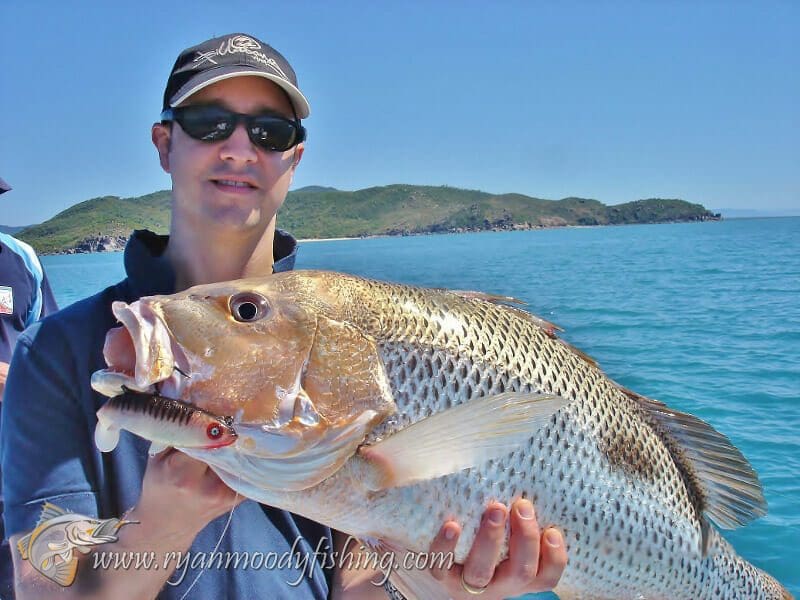
Golden Snapper are Highly Vulnerable to Overfishing
In the northern territory, golden snapper have been classified as an over fished stock. According to NT researchers, the probability of golden snapper experiencing current overfishing on accessible reefs is 99%! (Table 1)
Interestingly only 2-9% of estimated total catch of fingermark- golden snapper resulted from commercial fishing. So this is effectively a recreational fishing issue.
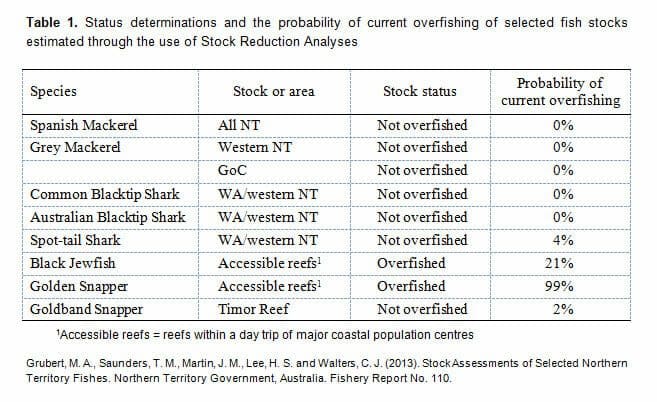
The main reason we have a sustainability issue for this species is as follows;
• Life history traits – slow growing, late maturing,
• Congregate in one area plus use of GPS by modern fishers
• Fatal barotrauma in waters over 10m deep
• Primarily harvested by the recreational sector with no routine way to collect catch assessment data (the commercial sector fill out catch log books)
• Incidental mortality (by barotrauma) impossible to limit through regulations and can only be achieved by behavioural changes by recreational fishers ie. Cessation of catch and release fishing once possession limit is reached and moving elsewhere to target other species.
In Queensland and Western Australia where less research has been done, the stock estimates are classified as “undefined”, however given the bullet points above there is certainly reason for concern.
These are important considerations for anyone serious about golden snapper/fingermark fishing sustainably.
Especially when we look at recent history – the over-fishing of the red snapper (a northern hemisphere cousin of the golden snapper) with similar life-history and the issues currently experienced in the NT
But is it all doom and gloom?
Not if we are aware of the issues and adjust our behaviour accordingly.
It must also be remembered that the NT figures are based on “accessible reefs” and there are no doubt innumerable areas that still hold good stocks.
For example the video below includes underwater footage of a good school of reasonably sized Fingermark in the Hinchinbrook Channel taken recently.
In order to preserve these stocks, we must limit both the harvest and incidental mortality of golden snapper to prevent overfishing.
We can do this in 3 ways:
1: Abide by catch and possession limits.
At time of writing these limits for fingermark fishing were as follows;
Northern Territory Regulations: Possession limit 3 and vessel limits apply if more than 4 people are on board (e.g. max of 12 fingermark for 5–7 people, and 24 for 8+). No minimum size limit!
Queensland Regulations: Possession limit 5, minimum size 35 cm.
Western Australia Regulations: Possession limit 4, minimum size 30 cm
*Please note that these limits are subject to change and you should check with your local regulations.
2: Cease catch and release fishing once possession limit is reached and move elsewhere to target other species.
3. Get involved with recreational fishing surveys e.g. infofish
How to Catch Golden Snapper/Fingermark – Fishing Tips
With the barramundi fishing closure in Queensland over summer, golden snapper/fingermark fishing intensifies and is one of our favourite pursuits.
Hinchinbrook holds good congregations of Fingermark and they can often be encountered in shallower water making catch and release a viable option.
Areas I like to look for Fingermark are between 8-15m deep. In the creeks and estuaries look for deep pinnacles on a rubble bottom.
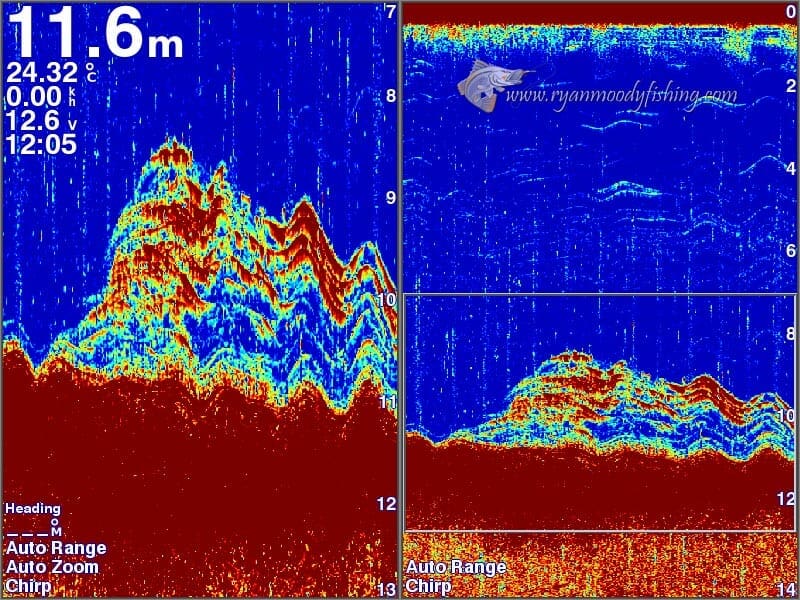
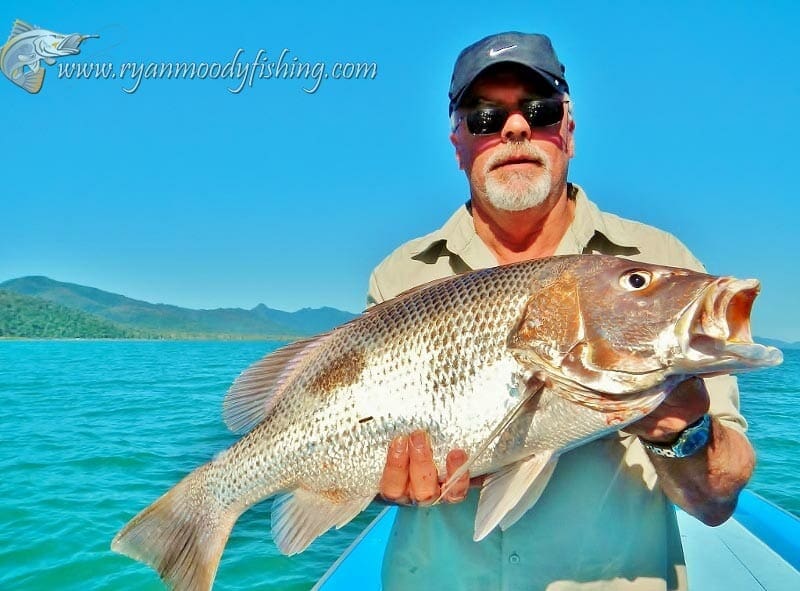
The larger fish are often found around inshore reef and headlands. This short video shows a few caught on a trip to cooktown recently in very shallow water.
Top Tactics for Fingermark Fishing
Golden Snapper can be targeted in a number of ways with the neaper tides always being the most productive;
- JIGGING – I like to use our Pillager stick baits as a modern alternative to vibes for shallow water (depending on current but ballpark up to 15-20 meters for the 26g) and for deeper water up to 40-50 m we use our levitate jigs.
- TROLLING – This method is most effective around headlands and inshore reefs using a deep diver to put your lure right in front of the fish.
- LIVE BAIT – Herring are by far their favourite bait – used on a dropper rig in deeper water locations.
- LIVE SQUID – Caught at night while you are fishing and another very good bait. (use of a squid light, squid jigs required, a drawstring castnet is also another good method of catching multiple squid around the squid light.
For tips on how to catch and rig your live bait for fingermark fishing or other tropical species like barramundi, check out our previous posts;
Clean and dry method for throwing a cast net.
Best live bait hooks to use when releasing fish
Fingermark for Future Generations
Fingermark fishing is very popular especially during the closed Barramundi season.
Although many people believe that they fish best at night it is possible to have some great sessions during daylight hours.
Night fishing in the summer months will definitely account for the larger of the species but during the winter months we find big aggregations of smaller fish (50 to 70cm) on inshore marks during the daylight hours. As long as you’re fishing them at the right time you will encounter some hot sessions.
When I go out to target them I always have a plan with regards to the tides and where I should be in relation to those tides.
To ensure fingermark will be around for my sons to catch well into the future, I have always made sure that when I fish a spot I leave it alone for a while and concentrate on others plus after we have caught a few we move on to another spot or species.
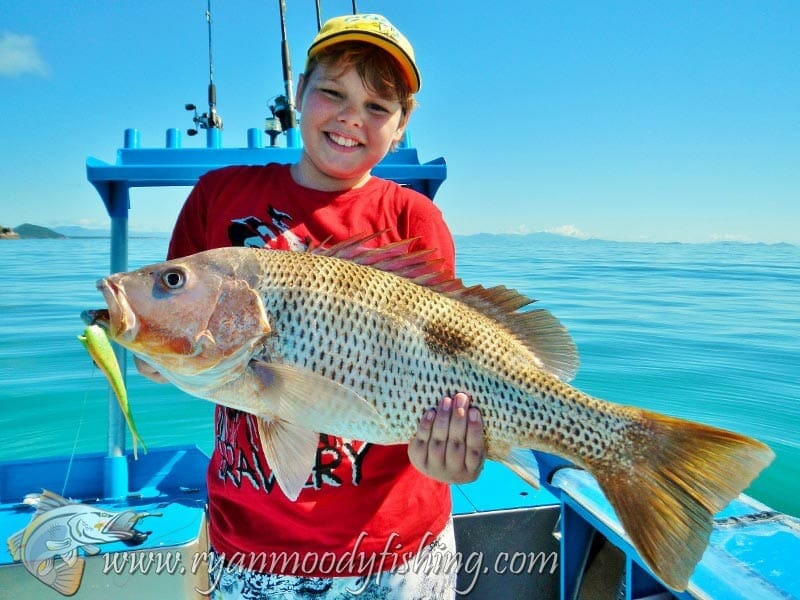
I don’t believe in thrashing spots to death so that’s why I invest in a Garmin side scanner which allows me to find numerous areas to rotate my fishing days around.
To view a short fun video of me and the kids jigging for fingermark and other species around Hinchinbrook, click here.
It’s very important to practice responsible fishing for this species and I hope this post has brought to your attention the issues surrounding sustainability.
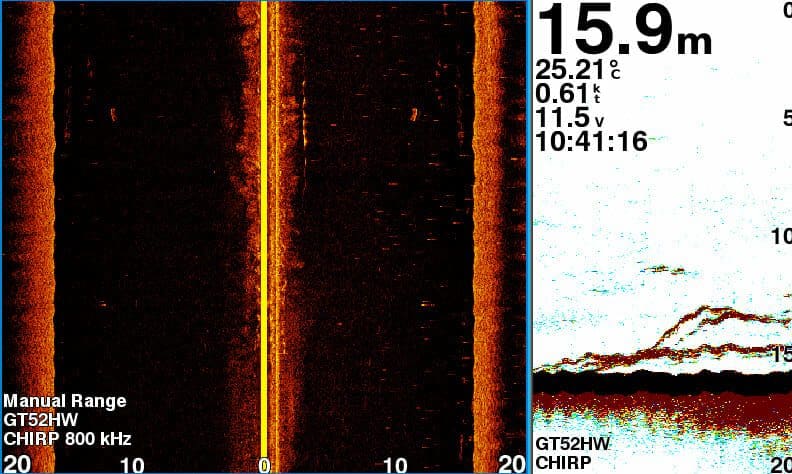
Learn Fingermark Fishing Patterns in Our Free Workshop
If Fingermark are your passion, or maybe you’d just like to catch one regularly for dinner, I explain how to work out their patterns both day and night, inshore and offshore, in my Fingermark Strategies Workshop.
It consists of two videos and I’m sure you’re going to love it.
Click the button below to sign up – it’s free and only takes about 40 minutes to watch both videos.


